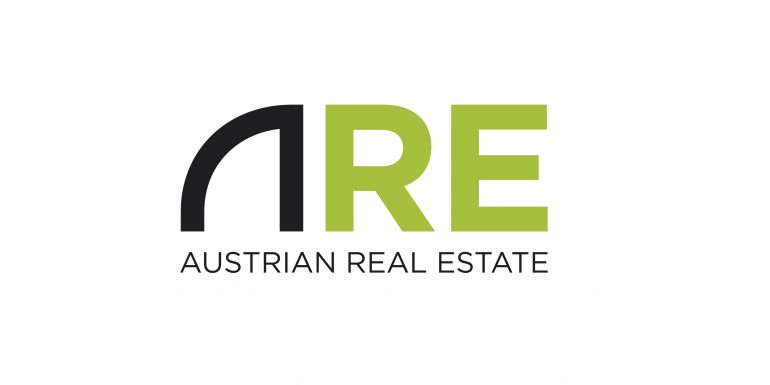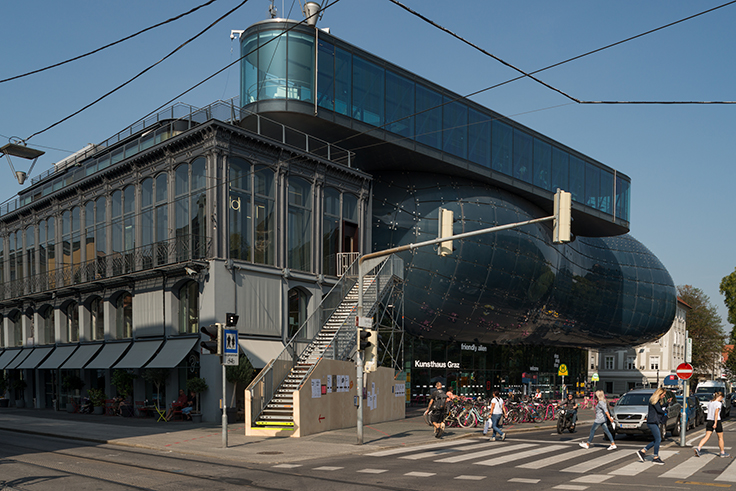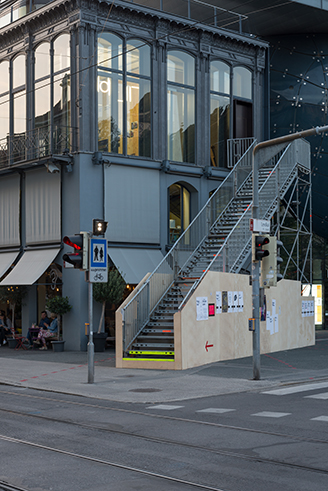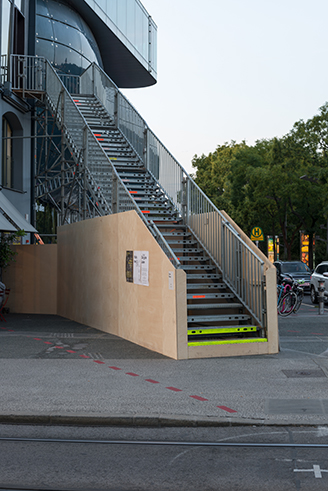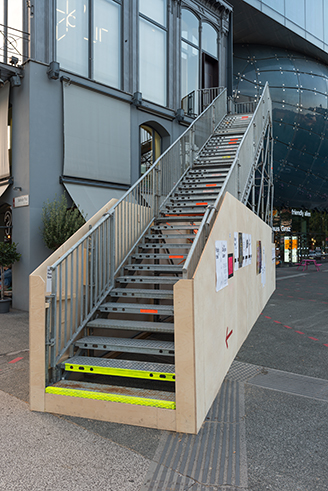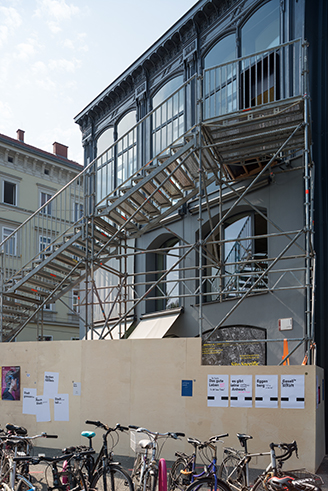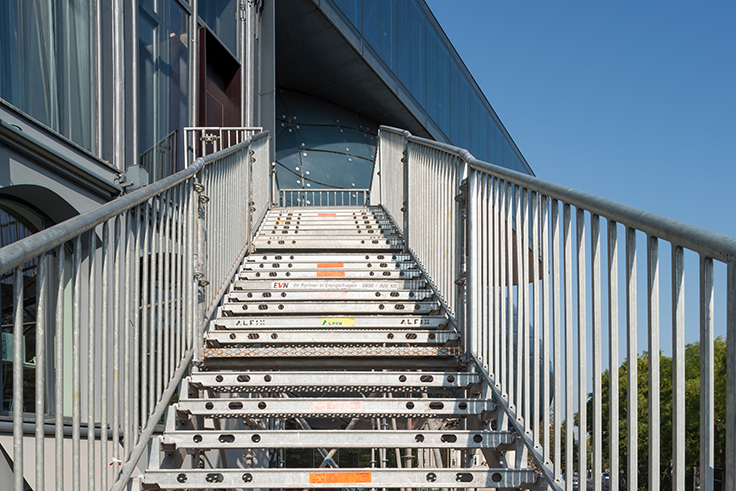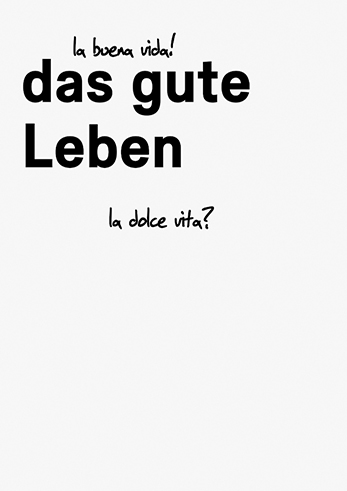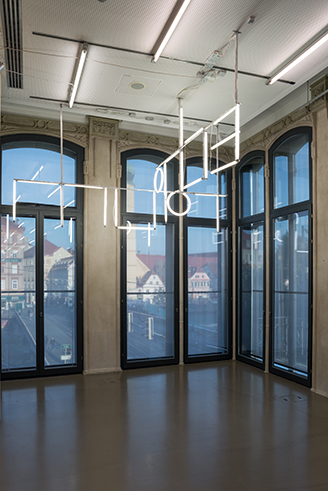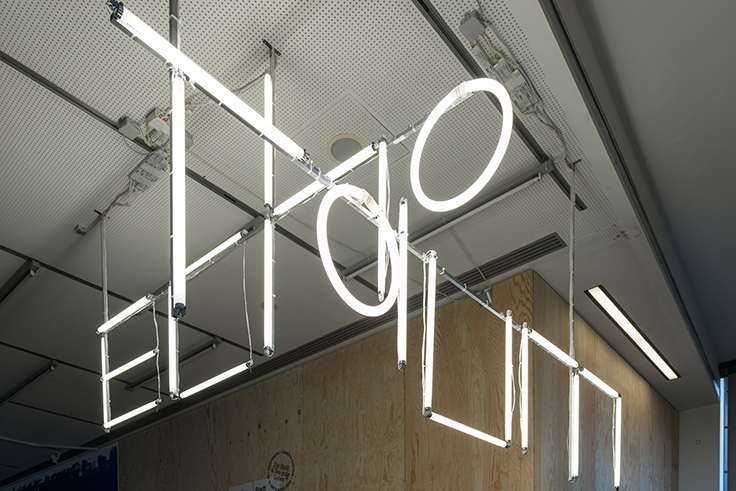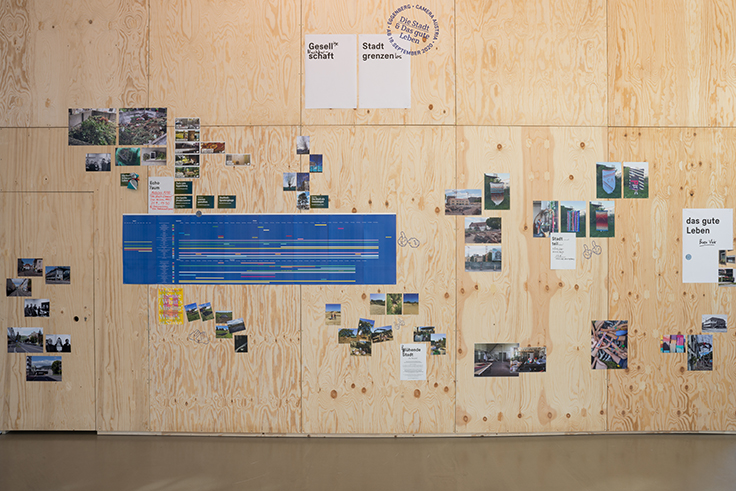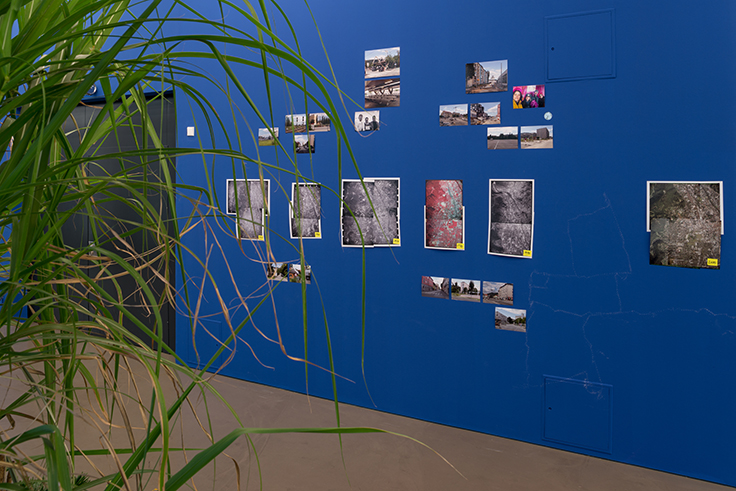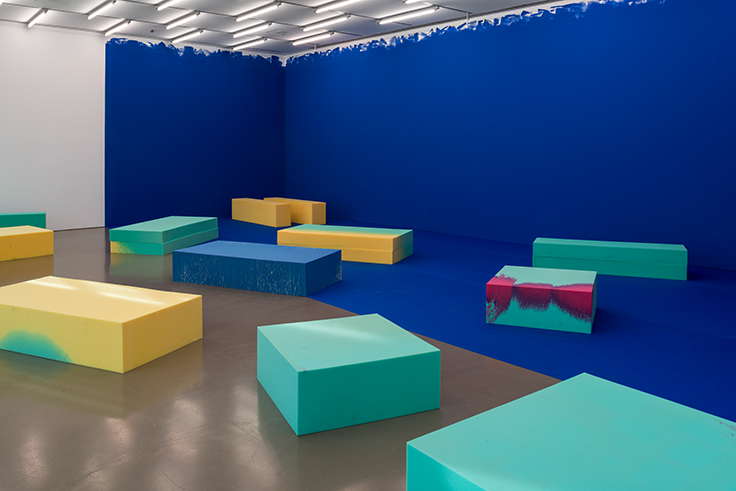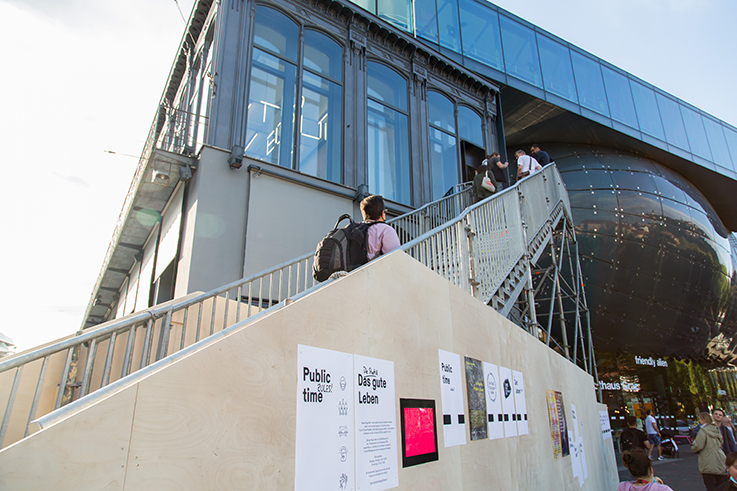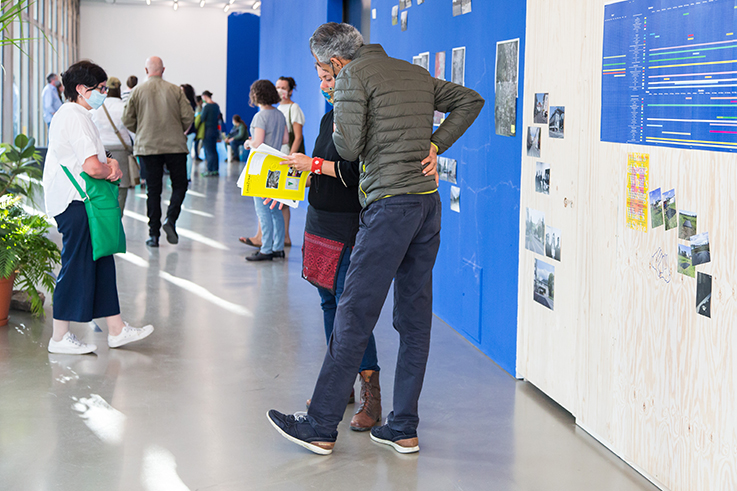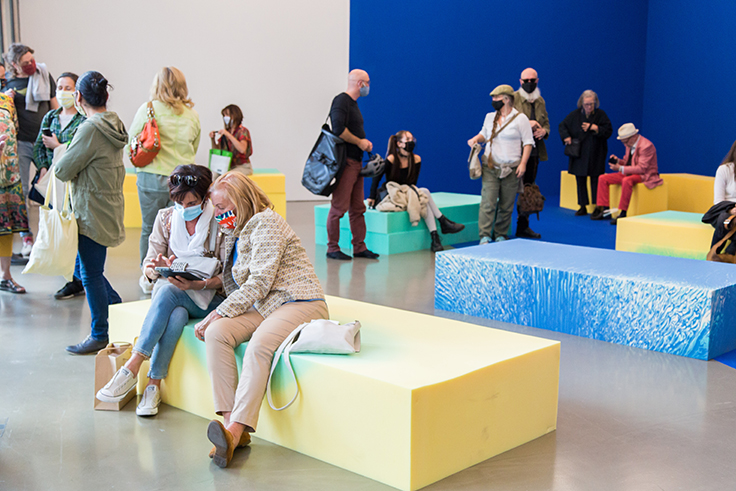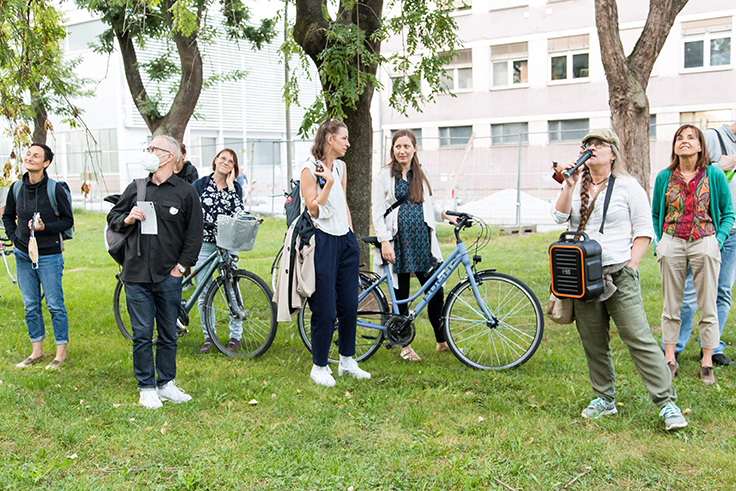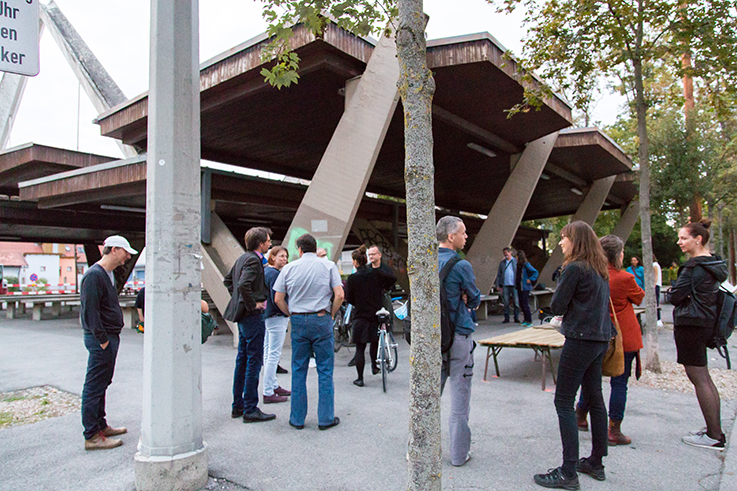Site-Specific (Public) Lessons | The City & The Good Life
Infos
Site-Specific (Public) Lessons
Eggenberg – Echo Space
A Sphere of Activity and Agency by Nicole Six & Paul Petritsch
Opening walk
18.9.2020, 5 pm
Duration
19.9.2020 – 22.11.2020
extended until February 21, 2021
Opening hours
Tue – Sun and bank holidays
10 am to 6 pm
A project by Camera Austria and partners for Graz Kulturjahr 2020.
Information
www.diestadtunddasguteleben.at
Events
“Portfolio” (scroll down to “materials”).
Project partners
BAWO Bundesarbeitsgemeinschaft Wohnungslosenhilfe / Daniela Brasil / Gruppe »Bussi«, Abteilung für Ortsbezogene Kunst, Universität für angewandte Kunst, Wien / Camera Austria / Georg Dinstl & Uwe Gallaun / Eggenberger Vielfalt / Stadtteilprojekt EggenLend / Forum Stadtpark Graz / green.LAB Graz / Mathias Heyden & Dagmar Pelger / inspire – Bildung und Beteiligung / Institut für Kulturanthropologie und Europäische Ethnologie, Karl-Franzens-Universität Graz / Jugend am Werk – housing first / Helmut & Johanna Kandl / Natur.Werk.Stadt / Büro für Pessi_mismus / Klaus Resch / Sara Selimagic / Nicole Six & Paul Petritsch / Department »Soziale Arbeit« der FH Joanneum / Spitze Nadeln / StadtLABOR / Stories2go / Talenteküche / topothek Graz, GrazMuseum / Universität zu Köln – Labor für Kunst und Forschung / Urban Subjects / Ultra-red / VinziNest / vor.ort | Stadtteilmanagement a. o.
Intro
To mark the “opening” of the multi-part project “The City & The Good Life,” the Camera Austria exhibition space will be simultaneously opened to the public and temporarily abandoned. The project team and their guests will set out for the Eggenberg district as part of a “relay race” and open an Echo Space there that will connect the institution of Camera Austria with local initiatives and enter into a dialogue with them. These initiatives, which often escape public attention but are now more important (and endangered) than ever, shape everyday culture and the good life in the neighborhood. We’ll explore their interaction with the city and inquire into their activities, interests, and working conditions.
Until now, access to the Camera Austria exhibition space has been limited to the entrance and foyer of the Kunsthaus Graz. The artists Nicole Six & Paul Petritsch have developed a concept that includes an external staircase leading directly from the street into the exhibition room, offering visitors access, free of charge, to a space in the city that can be occupied by everyone.
This room forms the framework for an exhibition model that is both open and flexible. The institution (Camera Austria) and the city (exemplified by the Eggenberg district) function as equal and permeable work and archive spaces. The result is a large-scale (urban) field of action and intervention in which the two sites connect, communicate, and enter into a fruitful exchange.
Site-Specific (Public) Lessons | The City & The Good Life
“No longer the market, but rather distribution, no longer advertising but art by and for everyone, no longer competition but solidarity, no longer contest but commonality.”1
“[. . .] the question of what kind of city we want cannot be divorced from the question of what kind of people we want to be, what kinds of social relations we seek, what relations to nature we cherish, what style of life we desire, or what aesthetic values we hold.”2
The question of how to live the good life in the city doesn’t entail a list of tasks to accomplish or conditions to be achieved—more urban green space, less work, more jobs and networking, better infrastructure, more culture and better regional planning, fewer subsidies, and so on—, but is a complex work in progress that can sometimes be exhausting. After all, as we—the collaborative group that developed this project—wrote in one of the countless texts we drafted in preparation, the good life is not an ideal that can be attained, nor is it a fixed concept that seeks implementation, but is an ongoing process of negotiating and rethinking, sharing and participating, revising and reconnecting. A back and forth; a give and take. This is why a large number of questions presented themselves at the beginning and broadened the field of research and interaction, making it impossible to narrow it down.
As the twenty-first century progresses, what has become of the idea of living a good life in the city? Does it have a history, and if so, of what kind? Does it need to be defended, reconstructed, renewed? Who or what interests threaten it, and what aspects of our present period need to be examined to answer these questions—at a time when the city, or rather the urban complex, has become the core phenomenon of many societies, now that more and more people live in ever larger cities and metropolises worldwide? What do we find when we take a look around our local area, and what role do cities play in the face of all the social and cultural conflicts and crises we see?
Questions that lead to more questions: how do we transpose these conflicts and crises here onto Graz, with regard to the local situation? What areas does “our” city comprise, on what scale do we conceive it, and what do we count as part of “our” common city? What boundaries or thresholds pass through it, what social hierarchies? What are the contradictions we can overcome together, the common interests we can identify, the demands we’re able to formulate to-gether for a good life in the city? Who will be part of it, who can be part of this common endeavor?
After the months of crisis following March 2020, additional questions emerged: what role do care, concern, and community initiatives play? What resources, networks, and opportunities for participation in a good life in the city have the neoliberal city’s hierarchies, which are for the most part economically oriented, neglected? Moving forward, what social formations need to be imagined to rethink this good life, and what regulations and government methods have to be challenged more forcefully to advocate for this idea of the good life in the future?
What form would the “The City & The Good Life” project have to take in order to make progress with this extensive list of questions?
In Europe, the idea of a good life has a long history connecting it to the city. Aristotle considered the polis, the city commonwealth, to be linked with the loftiest goals and the very essence of politics. He defined the polis as a body politic that exists for the purpose of seeking the good life and happiness for its people. The city is founded to initiate a project, the end goal and purpose of which is to establish a community for the good life.3
On the other side of the world, in South America, the idea means something completely different. It questions western values of “growth” and “development” in order to achieve the good life collectively and in an ecologically balanced and culturally sensitive manner. Achieving a “good life for everyone”—“buen vivir” or “vivir bien”—gained constitutional status in Ecuador (2008) and Bolivia (2009) and has since become an alternative to rampant neocolonialism and neoliberalism’s disruption of social life and exploitation of natural resources, one that continues to be debated internationally and with increasing frequency. Essentially, this subaltern concept challenges the hegemonic concept of progress (and the dialogue with it), which originated in Europe. “Indeed, buen vivir can be regarded as the first large-scale experiment in communication between modern and non-modern conceptions of the good life, conceptions that were considered antagonistic under the Eurocentric prism of the dichotomy between tradition and modernity.”4 The good life, then, calls “our western” life into question.
As far as the format of the project is concerned, we—the project development group—have decided to invite people already active in the field of social work, or involved in local centers, or working on various projects to improve the lives of many, in other words people who know numerous invisible aspects of “our” city better than we do. And we decided to turn Camera Austria’s institutional profile upside-down for a time. And so as we move out into urban space, we leave our space behind for the city and its public, and then, after some time, we return with our partners to report about or to show what we’ve found, what we’ve shared with or told one other, with whom we’ve done what, or where we’ve gotten involved. This is the idea behind the “Site-Specific (Public) Lessons” developed by the artists Nicole Six & Paul Petritsch. They will be setting up a framework and preparing the way for action characterized by participation, exchange, and transfer. The city and the institution respond to one other as echoes.
In the city itself, we’re active in Eggenberg, in the Eggen-Lend area. For the past several years, this district seems to have played an increasingly important role in Graz’s urban development: numerous residential building projects, including Campus Eggenberg, the Eggenberge, Smart City, and parts of the Reininghaus Gründe have changed the district and its infrastructure and thus the city’s overall makeup and are bringing new residents to Eggenberg, together with their stories, experiences, longings, and fears. In addition, Eggenberg is also interesting in that the only transitional apartments in the city of Graz are located in this district, as is an astonishingly large number of social facilities—such as Vinzidorf and the many additional facilities such as shops, food banks, and emergency shelters, to name the best-known examples—that many residents probably aren’t familiar with. In a sense, the district resembles an ongoing social experiment: new living space is being created, while at the same time the largely invisible downside—social decline and exclusion, migration, homelessness—is just as present, but missing from the city’s official brochures.
The “Site-Specific (Public) Lessons” provide a framework for exploration: tours of the district, parklets, workshops on common property and garden design, listening sessions and sound walks, dumpster diving for the recycling of plants, graffiti, birch goulash, permaculture in the city, Stories2go, an exhibition on balconies, a mobile cinema, designing and sewing banners to mark specific locations collected via questionnaires, a wall newspaper that appears unannounced in different locations, and the group “Bussi” from Vienna that uses temporary interventions to form an unregulated contrast to the district’s new housing regulations. A range of formats creates opportunities to learn something about the district, to share ideas, to make a mark and to explore different places through writing, to discuss films, to make oneself momentarily comfortable on the parklet of a large parking lot, to investigate the invisibility of homelessness, or to ask, with a microphone: what does the good life in the city sound like? The sum total of a multitude of small gestures of appropriation against the grand gesture of reorganization.
Following all these explorations, we return to the Iron House in the city center and bring back with us all that we’ve seen and experienced. While we were out and about in Eggenberg, the exhibition space was used in very different ways. Until now, it was only accessible via the entrance and foyer of the Kunsthaus Graz. The concept of the “Site-Specific (Public) Lessons” stipulates that an external staircase lead from the street directly into the exhibition space, making it accessible to visitors free of charge: a space that can be occupied by everyone in the city. The room is defined by its basic equipment: a billboard, foam elements that can be used for presentations as well as for sitting or lying down during one’s stay. Books are available, there’s a pinboard for news and the promotion of non-commercial activities, while other programs (films, videos, a reading circle) frame the room’s activities.
At this stage, the space is further enriched by an exhibition on women’s homelessness and a subsequent conference on the subject; the exhibition moves from the balconies in Eggenberg to the exhibtion space; a herbarium is being put together as a kind of cartography of the city; various “stations” address the topic of appreciation; an exhibition documents the clearing of an entire street due to a tram project; and the traces we left in the topothek Graz are presented.
Finally, we’re preparing an exhibition on the question of public time, titled “If Time Is Still Alive,” as well as a conference, “What Needs to Come Together in the End.” So—what, indeed, has to come together in the end to continue posing the question of the good life in the city?
What will we have learned from the conversations, the stories, walking and listening, eating with residents, from the pictures of private rooms, from the trees, the herbaria, the graffiti and other markings? At the time this is being written, these experiences still lie ahead of us. The project “The City & The Good Life” is therefore also driven by hope: to change the experience and thinking about the communal city, but also to change our roles in the enactment of what the city can be, both as people and as an institution.
But what type of thinking is necessary to design public space to make it possible “to belong fully in this world that is common to all of us,”5 to exercise our “right to the city” (Henri Lefebvre)? What do different population groups actually think about their current share in public life and in the public spheres? Don’t all those individuals and groups who contribute to the city’s production and reproduction have the right to decide where and how what kind of city life should be made? How should this multiplicity of voices be moderated? Don’t we have to face this challenge and embark on the difficult path of involving the many instead of repeatedly responding with methods of repression, exclusion, and devaluation?
In opposition to the hegemony of order and classification, which never produces anything but hierarchies, the Caribbean thinker Édouard Glissant calls for a “[. . .] thought of the trace [. . .] that is neither dominant nor compelling, but [. . .] intuitive, fragile, ambivalent, which best does justice to the extraordinary complexity of the world in which we live.”6 In this respect, the traces—even if they’re no more than marginal—that we leave behind with this project are not a form of subordination to a city order that is accepted as dominant, but the very future of this city, in which it’s no longer competition, investors, and consumption that dominate opportunities for appropriating the city, but rather, as Ludivine Bantigny phrases it, solidarity and commonality—a commonality we all share, and that we’ve investigated closely with this project, or so we hope.
Daniela Brasil, Reinhard Braun, Nicole Six & Paul Petritsch, Urban Subjects (Sabine Bitter, Jeff Derksen, Helmut Weber), July 2020
1 Ludivine Bantigny, “Die Zeit des Möglichen” (The Time of the Possible), in Lettre International 120/2018: May ’68, p. 38 (translated freely here from the German edition).
2 David Harvey, Rebel Cities (London / New York: Verso, 2012), p. 4.
3 Nikolai Roskamm, Die unbesetzte Stadt. Postfundamentalistisches Denken und das urbanistische Feld (The Unoccupied City. Post-fundamentalist Thought and the Urbanistic Field, Bauwelt Fundamente 158) (Basel: Birkhäuser Verlag, 2017), pp. 16–17.
4 Ana Patricia Cubillo-Guevara, Julien Vanhulst, Antonio Luis Hidalgo-Capitán, Adrián Beling, “Die lateinamerikanischen Diskurse zu buen vivir. Entstehung, Institutionaliserung und Veränderung” (The Latin American Discourse on Buen Vivir. Beginnings, Institutionalization, and Transformation) in PERIPHERIE, 1–2018, pp. 8–28, p. 27 (translated freely here from the German edition).
5 Achille Mbembe, Critique of Black Reason (Durham, NC: Duke University Press, 2017), p. 176.
6 Édouard Glissant, Kultur und Identität. Ansätze zu einer Poetik der Vielheit (Culture and Identity. Approaches to a Poetics of the Multitude) (Heidelberg: Verlag Das Wunderhorn, 2005), p. 21 (translated freely here from the German edition).
Ansichten Site-Specific (Public) Lessons Echo Space
Opening
Partners/Sponsors

